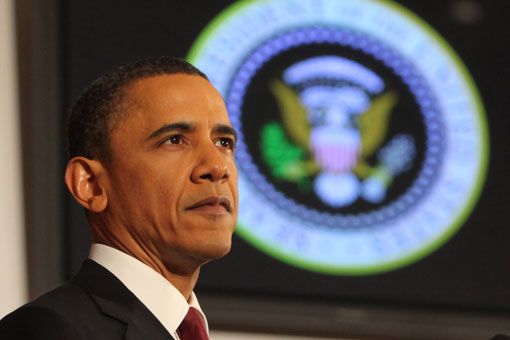A final goodbye to Superpower America?
Sombre analyses of America’s decline come in waves and the latest seems to be gathering strength. “AMERICAN DECLINE. This Time It’s Real” proclaims a recent magazine cover. “Yes, America is in Decline,” echoes another. Time to prepare obituaries for the world’s remaining superpower? How long will it take for the US to follow the example […]

Sombre analyses of America’s decline come in waves and the latest seems to be gathering strength. “AMERICAN DECLINE. This Time It’s Real” proclaims a recent magazine cover. “Yes, America is in Decline,” echoes another. Time to prepare obituaries for the world’s remaining superpower?
How long will it take for the US to follow the example of the Roman Empire and end up as Italy? That’s a question the prognosticators of America’s waning power and influence (also known as declinists) tend to sidestep, perhaps because so many past predictions of doom have been so wrong.
The “This Time It’s Real” assertion is on the cover of Foreign Policy, a magazine closely read by the foreign policy community. Inside, the British commentator Gideon Rachman lays out a well-argued case for saying the US will never again enjoy the dominance it had in the 17 years between the collapse of the Soviet Union and the global financial crisis of 2008.
The “Yes, America Is in Decline” headline is on the cover of TIME, the country’s most widely-read news magazine. The author and foreign policy analyst Fareed Zakaria bemoans the fact that Americans seem unable to grasp the magnitude of the challenges facing their country and that the political and economic changes now being debated in the U.S. “amount to rearranging the deck chairs on the Titanic.”
America’s modern-day Cassandras (Rachman and Zakaria are not the only ones) draw on a wealth of statistics to back up their arguments, from spending on research and development (once 1st in the world, now 6th) and domestic savings (84th) to life expectancy (27th) and college graduation (once 1st, now 12th). They all add up to a bleak picture that could lead to the following observation: “The decline argument…is driven by concern about the vast federal deficits of recent years and, consequently, the immense growth of the national debt. It reflects apprehensions regarding the deficits in the balance of trade, the necessity to borrow staggering sums abroad and the dramatic shift of the United States from a great creditor nation to the world’s largest debtor.”
That sounds as if it were culled from today’s headlines but it was written in the summer of 1988, by James Schlesinger, a former secretary of defense and then scholar at the Center for Strategic and International Studies, a Washington think tank. At the time, there was a full-blown debate over whether the United States was past its prime and headed for second-rank status. The dispute was prompted by the historian Paul Kennedy’s book “The Rise and Decline of Great Powers.”
In Kennedy’s view, the decline of the United States could probably be slowed but not averted and “the American share of world power has been declining relatively faster than Russia’s over the past few decades.” Not long after the book came out, the Berlin Wall fell. Not long after that, the Soviet Union collapsed.
Cycles of declinism
The Soviet threat to American dominance turned out to be more imagined than real and that may well prove to be true for China, the country that today looms large in the popular imagination and in forecasts about the future alignment of world powers. According to a Gallup poll in February, 52 percent of Americans think China is the world’s leading economic power.
Such perceptions are out of synch with reality. China’s GDP is less than two thirds that of the US. GDP per capita is roughly one to six ($47,123 to $7,518), according to 2010 figures from the IMF. As far as productivity is concerned, one American produces, by some estimates, as much as six Chinese.
Harvard University’s Joseph Nye, in a response to Zakaria’s gloom-and-doom analysis, says polls such as Gallup’s highlight “cycles of declinism” that say more about America’s collective psychology than underlying shifts in power.
“In the last half-century, polls showed Americans believed in their decline after the Soviet Union launched Sputnik in 1957, after Richard Nixon’s devaluation of the dollar and the oil shocks in the 1970s, and after the closing of Rust Belt industries and the budget deficits of Ronald Reagan’s administration in the 1980s,” he writes.
Declinists tend to give short shrift to an element that tends to play a key role for the global standing of a country – a culture that encourages innovation and attracts the world’s best and brightest. On this, the US has an edge over China, whose world-changing inventions belong to the ancient past – paper, gunpowder, the compass and wood printing.
The contemporary invention that changed the world more than any other, the Internet, was made in the United States which, declinist talk notwithstanding, still employs more than two thirds of the world’s Nobel Prize winners, accounts for about a third of the world’s patents, and is home to 13 of the world’s 20 top-ranked universities.
Unlike the doomsayers, President Barack Obama sounds confident that the US can retain its position: “It is my belief that we have all the pieces in place for us to make sure that the 21st century is the American Century just like the 20th was,” he said in February. “That means that we’ve got to out-educate every other country in the world. We’re going to have to out-innovate every country in the world.”
It’s a very tall order. Is it possible? We’ll know by around 2030.













